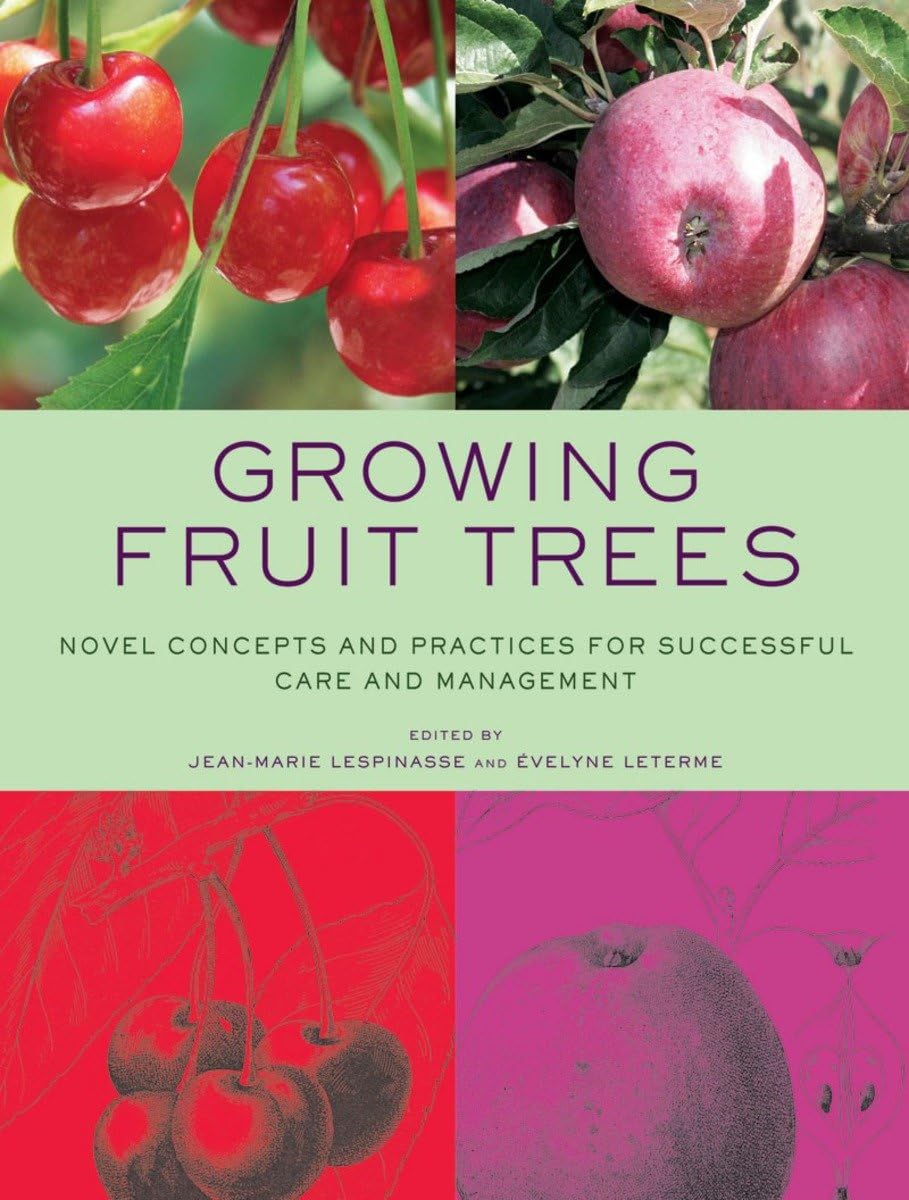معلومات عنا
حقوق الطبع والنشر © 2024 Desertcart Holdings Limited
Desert Online General Trading LLC
Dubai, United Arab Emirates


Growing Fruit Trees: Novel Concepts and Practices for Successful Care and Management
D**C
See commentary below.
For me, coming from a biology and arborist background, this book is very informative. I do not want to discourage the the novice. (Use the glossary in the back of the book to gain an understanding of the concepts and terminology.) The information is current and concise. The details and photos are great. However, some concepts are best understood by observing an existing tree (of the species of interest) in your area.
J**A
Sort of book I would Like
Sent as a gift
J**E
Excellent book to help you understand your fruit trees
I picked up a copy of this book at the library and ended up buying it so I will have this as a reference book. The authors are French, but the book covers the U.S. as well. It's pretty interesting to see the varieties that are grown elsewhere.The book contains quite a bit of technical and practical information on growing fruit trees. There are excellent photos and diagrams throughout that will help you to understand how and where the fruits will grow on the branches. If you've ever cut off next year's fruiting wood, this will keep you from making that mistake.The Introduction has a history of fruit trees and how they evolved through interaction with livestock and humans. This is fascinating stuff and will help you understand why fruit trees behave as they do and how pruning affects them.The authors cover in detail 12 kinds of fruits and nuts: Almond, Apple, Apricot, Cherry, Chestnut, Fig, Grape, Hazelnut, Kiwi, Olive, Peach, Pear, Plum, Quince, and Walnut. Each chapter is similarly organized.The Apricot chapter, for example, starts with the history of the apricot and where it originated. The authors trace the origin and the spread of the apricot from the Middle East, North Africa, Greece, Armenia, Italy, France, and then on to the U.S. Turkey is the largest apricot producer in the world. You find the interesting information that production in California is down because of the inexpensive Turkish dried apricots, increased urbanization, and decreased consumption of apricot nectar.Now another section on "The Tree", is eight pages packed with all that information to help you become familiar with the various parts of the apricot tree - the branches and types of growth, where the fruit will appear next year, and flowering. There are many photos and excellent drawings to help you out. The next section is about the "Principles of Training".If you've ever stood in front of your fruit tree and were confused about what you should prune and what you should keep, this will help you immensely.
C**D
Pretty much the best book for the backyard grower.
Pretty much the best book for the backyard grower. Talks about all the types of fruit trees you would grow with good instructions of growing and pruning for size control and heavy fruiting.
J**L
because for the first time I feel like I understand how and why to take specific management ...
A friend loaned me a copy of this first, and after digging in it was clear I needed to own it. We have a small orchard with less than a dozen young trees in an urban backyard. Our goal is to maximize production in a small space while maintaining the health and longevity of the tree. This book covers dozens of types of food trees, including nuts, in deep detail. In truth, the density of information is a little overwhelming at first read, but it's worth it, because for the first time I feel like I understand how and why to take specific management steps on my trees. So far so good; our peach tree is covered with fruit and by following their plan to bend the limbs low and stake them, we kept the tree small enough that we were able to cover it with sheets through several hail storms. Before staking, it was much too tall to have any hope of protecting the young fruits. Highly recommended.
ترست بايلوت
منذ 4 أيام
منذ شهرين